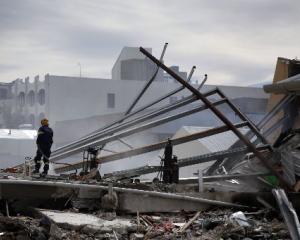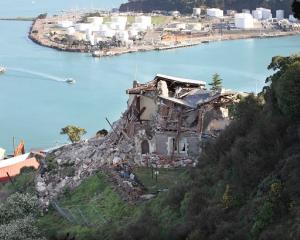Scientists investigating the earthquakes that have hit Canterbury since September's massive 7.1 tremor last year have found a previously unknown faultline that could trigger a magnitude 7 earthquake in the area.
Some 181 people lost their lives a 6.3 magnitude quake on February 22.
Scientists from GNS Science, Niwa, Canterbury University, Otago University and the University of Calgary are involved in a project that aims to understand more about the pattern of aftershocks and shed light on where future earthquakes might occur.
They have estimated the probability of an earthquake of magnitude 6 to 7 happening within the next year at 23 percent for the region, and about 6 percent for the Christchurch city area, GNS Science said.
Niwa's research vessel Kaharoa, equipped with seismic gear, surveyed an area of about 800sq km of southern Pegasus Bay to map fault structures under the seabed.
The survey confirmed widespread offshore faults, with a number showing activity in the more recent geological past.
"There are younger fault structures that are active and they are reactivating the older faults," said Niwa principal scientist Philip Barnes.
The survey had revealed a previously unknown offshore fault that was about 25km-long and capable of generating an earthquake of magnitude 6 to 7.
"However, at present there is no strong evidence that aftershocks are migrating offshore on to any of the fault structures in Pegasus Bay," Dr Barnes said.
"Overall, most of the offshore faults are slow moving and their rates of activity are similar to the slowest moving faults anywhere in New Zealand."
Dr Barnes said more analysis was needed for scientists to understand just what they were seeing in the seismic data.
"Understanding the earthquake hazard for the coming years and decades requires an assessment of all the faults in the region, and learning about their rates of activity and earthquake potential."
Meanwhile, Canterbury University, working with the University of Calgary, conducted 45km of seismic surveys at four separate areas across Canterbury and in Christchurch.
Canterbury University Professor Jarg Pettinga, who led the surveys, said the data had revealed several previously unknown fault structures mostly branching north east to south west.
Scientists have been able to identify bedrock structures on which the magnitude 5.3 Boxing Day and magnitude 6.3 February 22 earthquakes occurred.
"They appear to be very old faults in the basement rock that may have been weakly reactivated. Cantabrians live in a seismically active area, and finding previously unknown faults that seem to have very long intervals between ruptures won't have significantly increased the level of earthquake hazard in the region," Prof Pettinga said.






